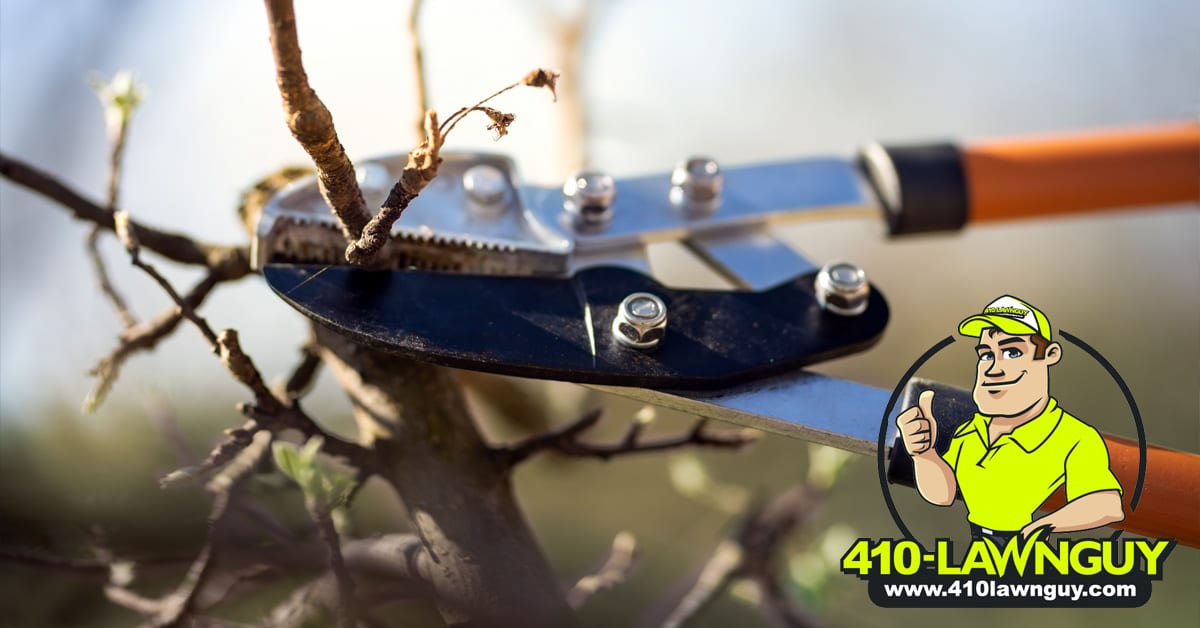
Planting Grass and Trimming Back Shrubs
What are they doing?! You wonder as you watch your neighbor outside in the dead of winter, pruning their shrubs and throwing out grass seed. Do they know something I don’t? What’s the deal with winter lawn maintenance? When planting grass and trimming back shrubs, what time of year is best? It really depends on the type of grass and shrubs you have.
Planting Grass
If you missed the fall window to lay down seed, you might be waiting until spring comes around. However, depending on the type of grass in your yard, winter might be the best time to overseed bare spots and thicken up your lawn.
It’s best to do dormant seeding with cool-season grasses:
- Tall fescue
- Bluegrass
- Perennial ryegrass
Seeding now, as a part of your winter lawn maintenance, rather than waiting until spring, allows the grass seed time to germinate before existing grass and other plants begin to sprout.
Frost and snow seeding also have their advantages. The freeze and thaw cycle that comes along with cold night temperatures and warm day temperatures creates pockets and small cracks in the soil. This process provides natural aeration, allowing the seeds to fall into the cracks when wet and get covered over as the soil dries and fills back in.
If you want to try your hand at snow seeding, wait until there’s no more than an inch on the ground. Sprinkle grass seed in bare spots or where overseeding is necessary and allow the melting snow to water the seed and create good soil contact. Do this after the leaves, and other debris have been removed.
To take advantage of dormant seeding, begin at least six weeks before the last frost. The closer we get to spring, the more likely muddy conditions will prevent the seed from taking root in the desired location.
Trimming Back Shrubs
When fall cleanup is in full gear, it can be tempting to prune and shape your shrubs and trees to prepare for the winter ahead. Pruning encourages new growth. Doing this right when shrubs are going dormant can weaken them, causing breakage and affecting regrowth in the spring.
Sap-bearing trees should wait until spring for pruning. Not sure which plants are candidates for winter pruning? Here are a few:
- Crabapple
- Spruce
- Poplar
- Sumac
- Juniper
- Hydrangeas
- Cherry
- Plum
- Pear
Early spring plants are best pruned right after their last bloom, but the cold dead of winter is best for deciduous shrubs. The plants are fully dormant at this point, and all the leaves have long been gone. Therefore, it is much easier to see the branches and do a more effective pruning job.
Avoid pruning when the tree or shrub is wet, as this can spread disease and stimulate microbe growth. Remove the dead or dying growth before you tackle anything else. Once done, stand back and reassess what’s left to create a new plan of attack.
Keep your tools clean and wash them with soap and water between pruning sessions, especially if they’ve come into contact with a diseased shrub or branch.
When You’re Ready to Call the Professionals
If you’re unsure when to seed or trim back shrubs in your garden oasis, give the 410LAWNGUY a call. We can come out to assess your landscaping needs and create a maintenance schedule that makes sense for your yard. Then we’ll come out to tackle the seeding and pruning while you stay warm and toasty inside.

